Hosted by Laverda spare Parts










Laverda at Phillip Island International Classic 2013
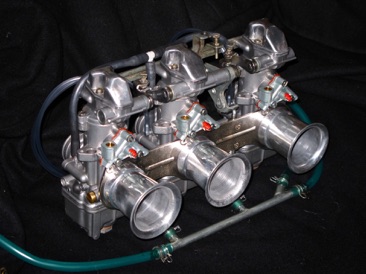
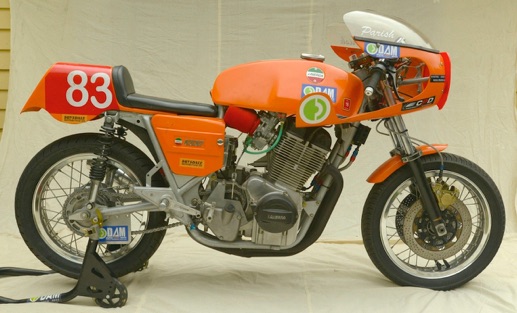
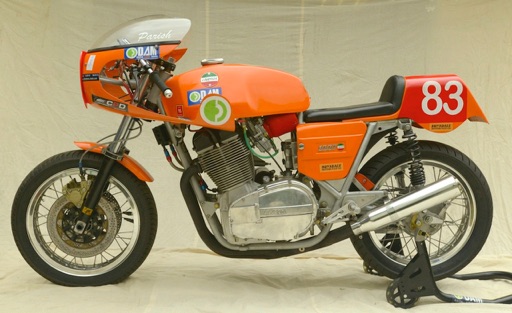





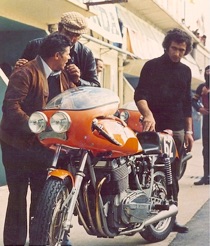
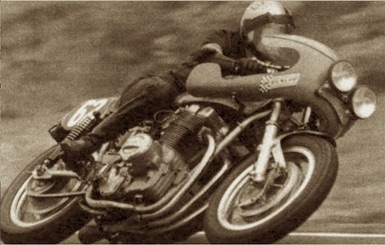
1972 Laverda 3C Bol D’or. Courtesy Laverda Corse
A Laverda front hub was modified to accept a 25mm hollow axle and laced to an 18” x 2.5 inch rim. The rear drum taken from a trail bike was also laced to a 18” x 2.5 inch rim, this being the widest rim allowed in the Period 4 class.
Along with revised chassis geometry the 38mm fork tubes were swapped for longer tubes to increase the ground clearance. The triple clamp offset was also changed to give shorter trail figures.
“It works OK but I’d still prefer to steepen it up a little more.” Greg says.
Friend and Journalist Alan Cathcart & Engineer Ian Drysdale talk racing with Greg Parish
With confidence that the motor was now reliable the first session of practice was a time for greg to reaquaint himself with racing on one of the worlds fastest race circuits. “I had a few bike set-up things to sort out in the first session, mostly controls more than suspension things. I found that when crouching over the tank down the straight my foot was actually pressing down lightly on the lever dragging the rear brake. One set of brake shoes gone in 10 laps!”
The D.A.M. Classic Racing Laverda qualified 13th from an international field of 40 starters and the lap times came down consistently each time it went out. But by the second race a buckled front disc was costing precious time each corner. By the end of the weekend Greg finished 9th outright in the Post Classic Unlimited Class.

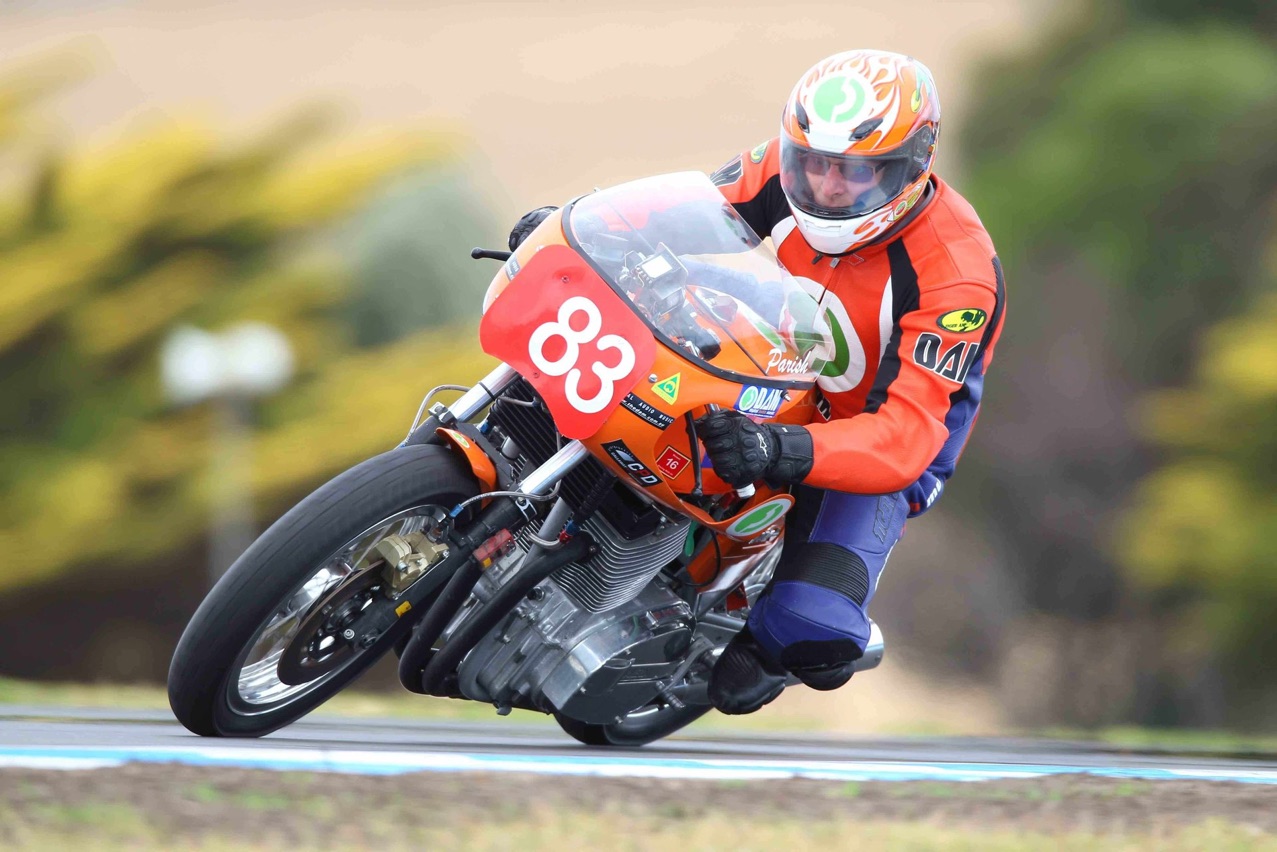


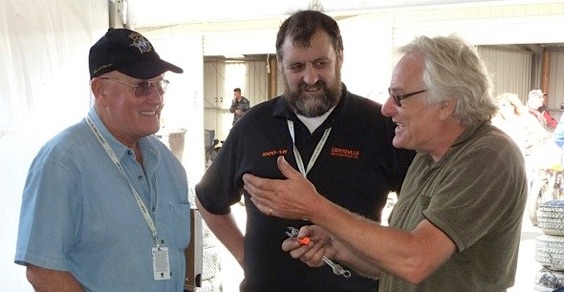
Greg Parish on the D.A.M. Classic Racing Laverda #83 finished finished 9th outright against 40 starters in the Post Classic Unlimited Class at the Phillip Island International Classic at Phillip Island Grand Prix Circuit.



Copyright The DAM










Media and Articles

